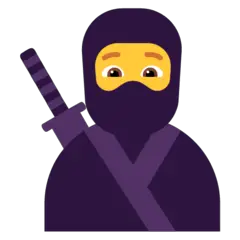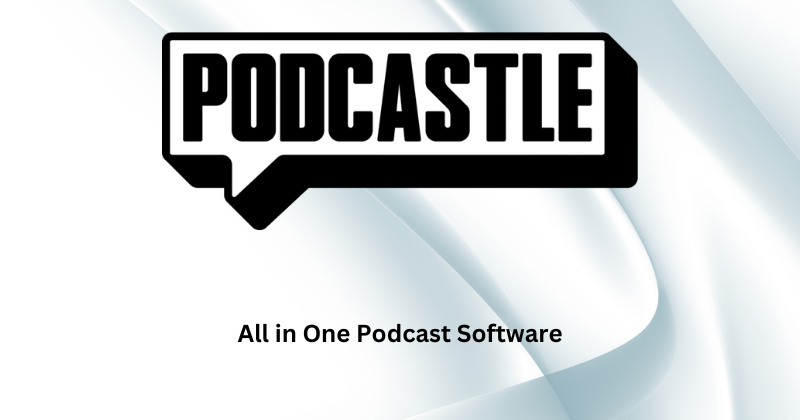If you are an avid emoji user, you might have come across the 🥷 ninja emoji while scrolling through your keyboard. In this article with Impeccable Nest, we will delve into the ninja emoji meaning, exploring its symbolism and significance. We will also discuss how to use this emoji effectively, provide examples, comparisons, and offer advice on incorporating it into your messaging. So, let’s embark on this journey of understanding the enigmatic world of the ninja emoji.

Understanding the Meaning of the Ninja Emoji 🥷
The ninja emoji 🥷 depicts a masked warrior dressed in traditional black attire, instantly evoking a sense of mystery and intrigue. The historical concept of a ninja originated in ancient Japan, where these stealthy warriors were highly skilled in espionage, sabotage, and assassination techniques. The ninja emoji captures the essence of these legendary figures, symbolizing attributes such as secrecy, agility, strength, and adaptability.
Unmasking the Ninja Emoji Meaning
When it comes to deciphering the meaning behind the ninja emoji 🥷, several interpretations can be derived based on context. Here are some common connotations associated with this symbol:
Stealth and Mystery
One meaning of the ninja emoji is that it embodies the quality of secrecy or confidentiality. As someone who practices ninjutsu, a martial art focused on covert tactics and espionage, a ninja must be able to keep their actions and motives hidden from others. This skill can be especially useful in today’s society where privacy concerns are prevalent, and people may feel the need to protect their personal information.
In addition to keeping secrets, the ninja emoji also suggests the importance of maintaining an air of mystery. By not revealing everything about oneself, a person can cultivate an aura of intrigue and allure that can be attractive to others. This approach can be useful in social situations, where it can help one to stand out and capture attention.
Furthermore, the ninja emoji also conveys the idea of resilience and adaptability. Ninjas were known for their ability to overcome obstacles and challenges through resourcefulness and creativity. They could improvise weapons, use disguise and misdirection to evade capture, and rely on their wits and quick reflexes to outmaneuver their opponents. In this sense, the ninja emoji encourages individuals to think outside the box and find unconventional solutions to problems.
Strength and Resilience
The ninja emoji is often associated with strength and resilience. Just like the legendary ninjas who were skilled in martial arts and espionage, this emoji embodies the same characteristics. It represents physical strength, agility, and mental fortitude. These are traits that we all need in order to overcome obstacles and challenges in life.
Furthermore, the ninja emoji also represents perseverance and determination. Ninjas were known for their ability to face any challenge head on and never give up. They would train extensively to hone their skills and master their craft. This same level of dedication is what the ninja emoji reminds us to have. No matter how difficult the situation may seem, we should always strive to keep going and not give up.
Another aspect of the ninja emoji’s meaning is its association with stealth and secrecy. The ninja was known for being able to move silently and undetected, which made them very effective in their missions. In the modern world, this can be interpreted as being discreet and keeping things confidential. It reminds us that sometimes it’s better to keep our plans and intentions to ourselves in order to achieve our goals.
Adaptability and Versatility
The ninja emoji is a popular emoji that is commonly used to signify versatility, flexibility and adaptability. The ninja was an ancient Japanese warrior who was known for their exceptional fighting skills, agility and stealth. They were able to navigate through different situations with ease, and were skilled in the art of espionage. The ninja emoji reflects these qualities, and encourages individuals to embrace change and be versatile in different situations.
The ninja emoji features a figure dressed in traditional ninja attire, complete with a black mask, a dark outfit and a headband. The figure is often shown in action, with various poses and gestures that reflect the ninja’s agility and ability to move quickly and silently. Some variations of the emoji also depict the ninja holding weapons such as swords or throwing stars.
In modern times, the ninja has become a symbol of versatility and flexibility. In a world that is constantly changing, individuals must be able to adapt quickly to new circumstances in order to succeed. The ninja emoji reflects this idea, and encourages individuals to approach challenges with a flexible and adaptable mindset.
Whether it’s navigating a new job, adapting to a new environment, or simply trying to stay on top of a busy schedule, the ninja emoji serves as a reminder to be versatile and open-minded. It highlights the importance of being able to adjust to changing circumstances, and encourages individuals to embrace new opportunities and experiences.
Protector and Guardian
In the context of modern communication, the ninja emoji can convey different connotations depending on the situation and the intent of the sender. However, one of the most common interpretations of this symbol is that of protection and vigilance. This meaning derives from the traditional role of ninjas as defenders of justice, who use their expertise and cunning to safeguard their communities and uphold moral values.
For many people, the ninja emoji represents a desire to protect oneself and others from harm or danger. This can manifest in different ways, such as being watchful and alert to potential threats, or actively intervening to prevent harm or injustice. The ninja emoji can also express a sense of empowerment and strength, as it implies a willingness to take action and overcome obstacles.
Moreover, the ninja emoji can be associated with qualities such as agility, speed, and precision. These attributes are often admired in popular culture, as they embody a sense of excellence and mastery. When using the ninja emoji, individuals may be expressing admiration for someone’s skill or proficiency, or indicating their own aspirations to develop similar abilities.
In conclusion, the ninja emoji holds multiple meanings and interpretations in contemporary society. However, its association with protection and vigilance remains one of the most prevalent and relevant connotations. Whether used to express admiration, empowerment, or a sense of responsibility, the ninja emoji can serve as a powerful symbol of our desire to safeguard ourselves and those around us.
The Ninja Emoji as Representation of Japanese Culture 🇯🇵
On a deeper level, the ninja emoji also encapsulates elements of traditional Japanese culture and ethos. Though ninjas were covert agents, they followed the code of bushido – the samurai warrior code that prized honor, loyalty, martial skills, and discipline. So while the ninja emoji has a modern pop culture appeal, it also retains symbolic ties to Japan’s feudal past.
Some of these symbolic associations include:
- Focus – Single-minded focus on the mission at hand is embodied in the stealthy ninja image. This reflects the Japanese cultural emphasis on dedication, concentration, and perfecting one’s craft.
- Strategic thinking – Ninjas had to plan and think strategically to outwit enemies. This speaks to the Japanese value of careful deliberation and intellect alongside martial strength.
- Adaptability – A ninja’s ability to adapt and operate in the shadows represents the flexible, dynamic thinking valued in Japanese culture.
- Discretion – By keeping a low profile in black garb, ninjas epitomize the cultural preference for modesty and subtlety in Japan.
So for Japanese users especially, the ninja emoji may evoke a sense of cultural identity and values – not just the pop culture associations.
How to Use the Ninja Emoji Effectively
To make the most of the ninja emoji 🥷, consider the following tips for effective usage:
- Expressing Stealthiness: When you want to convey a sense of being sneaky or discreet, incorporate the ninja emoji into your message. For example, “I quietly slipped out of the room 🥷.”
- Depicting Strength and Resilience: If you wish to emphasize resilience or strength in a situation, pair the ninja emoji with relevant words. For instance, “She faced the challenges head-on and emerged victorious 🥷💪.”
- Signifying Adaptability: When discussing adaptability or versatility, include the ninja emoji to reinforce your point. For example, “In today’s fast-paced world, we must be agile and adaptable to thrive 🥷✨.”
Examples of Ninja Emoji Usage
Some common ways the ninja emoji 🥷 is used in digital messaging:
- To suggest sneaking around or stealthy action (“We need to ninja 🥷 our way into the concert!”)
- To imply mischief or trickery (“I ninja’d 🥷 the last cookie when no one was looking”)
- To denote skill, precision, or masterful abilities (“She plays guitar like a ninja 🥷”)
- To represent vigilance and preparedness (“Always stay alert ninja-style 🥷”)
- To signify hiding or keeping a low profile (“Let’s ninja 🥷 and keep out of sight”)
Conclusion
The ninja emoji 🥷 holds a rich symbolism that encompasses stealth, strength, adaptability, and mystery. Understanding its meaning allows us to incorporate this powerful symbol effectively into our digital communication. Whether expressing resilience, agility, or embracing a sense of secrecy, the ninja emoji empowers us to convey these concepts succinctly with a touch of enigma. So, unleash your inner ninja and use this emoji wisely to add depth and intrigue to your messages! 🥷

I am Lois Mullins, an enthusiast in emoji deciphering. Over the recent years, I have continuously updated and delved deep into the knowledge of emoji decryption.
I take pride in my extensive knowledge of decoding emojis, particularly in the Emoji Meanings of Impeccable Nest . I believe that a profound understanding of decoding these symbols can be beneficial for individuals in comprehending the nuances of language when someone sends them an emoji.
By grasping the nuances and potential misinterpretations of these emotional symbols, I am confident that people can use them more effectively to express their emotions and build stronger connections with others. I am committed to sharing my knowledge with the community so that everyone can harness the power of emojis in their everyday communication.
If you are seeking an experienced individual ready to share their passion for emoji deciphering, I hope for the opportunity to collaborate and learn from others. Together, we can create innovative and unique communication experiences!






